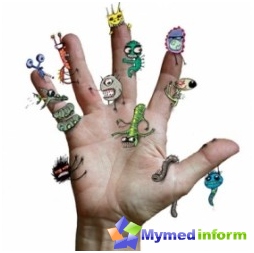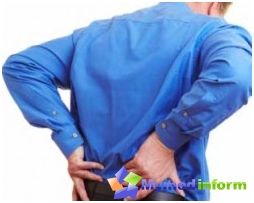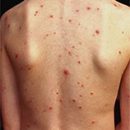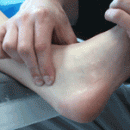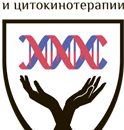Bradycardia is called a slowdown of a pulse, which is caused by a heartfelt reduction. In adults, such a pulse is less than 60 blows per minute, in newborns less than 100 in calm state. And in children from 1 to 6 years old, the number of shots makes me 70 shots per minute. We will tell about this disease today our website.
Description
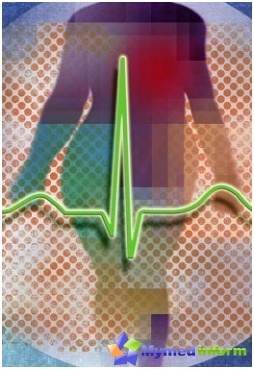
Bradycardia is a violation of sinus rhythm (sinus bradycardia). Sinus rhythm is under the control of the sinus node, which is located at the mouth of the hollow veins (top and bottom). This is exactly the place where they fall into the right atria.
Changing heart rate with a decrease in heart rate up to 50-30 beats per minute and there is a sinus bradycardia.
Bradycardia may be several types:
- Absolute bradycardia - such a form can always be determined, independently in what state is a person at the time of inspection;
- Relative bradycardia - takes place during fever, meningitis, infectious diseases, injuries after exercise. It applies to this kind «Bradycardia athletes»;
- Moderate bradycardia appears mainly in people with breathing arrhythmia, in which the pulse frequency increases when inhaling, and when exhaling it decreases. Most often, this type of disease can be found in adolescents and children, as well as in people with a tone of the vegetative nervous system, exceeding the norm;
- Extracardial bradycardia occurs in people who have diseases of internal organs, neurological pathology or a mixture (edema of organs and tissues) and others.
Causes
The most common cause of bradycardia is an atrioventricular blockade of a sinus node. The cause of such processes is the degenerative change in muscle fibers responsible for the excitation and conducting pulses. Causes of bradycardia can be associated with chronic diseases of the heart, rheumatism, myocarditis and other diseases.
The history of diseases of patients Bradycardia may include information on the use of drugs that make the frequency of heart cuts rare. Information on the violation of the blood circulation of the brain may be attended due to the disease of the vessels. An important reason for the appearance of this disease is the distal blockade. The reasons for the appearance of sinus bradycardia can be different, as well as methods for the detection of the disease. Since bradycardia has three degrees, there are different ways to find it:
- The first degree is found only to the ECG;
- The second degree may show itself by the fact that there is a falling out of individual ventricular complexes, which are accompanied by interruptions of the rhythm of the heart;
- Bradycardia is a third degree characterized by the fact that there is a complete blockade of pulses in the ventricles from the atria. Such a phenomenon is called a full transverse blockade. As a result of such brandycardia, heart ventricles are reduced more slowly, about 30-40 beats per minute. This becomes the consequence of brain ischemia, because of what the sore brandycardia may happen in sainfinder, loss of consciousness in short, convulsions, cyanosis, etc.
The consequences of the reasons that cause bradycardia may become a thrombus, which in turn lead to an embolism of peripheral arteries.
Symptoms
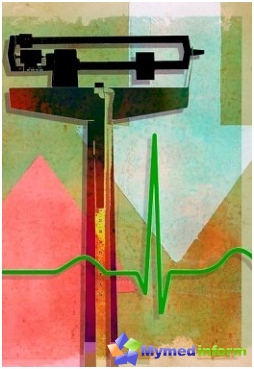
Although in most cases, the symptoms of sinus bradycardia appear weakly, but still there are some signs of the occurrence of this disease. It can be the total weakness of the body, dizziness, darkening in the eyes for a few seconds or «asterisk» before your eyes. Also when bradycardy is possible fainting, the appearance of cold sweat. Man quickly gets tired of what he had no sign of fatigue. But it is possible that sinusoidal bradycardia may appear asymptomatic.
If such symptoms are found, it is necessary to immediately seek advice from a specialist. The doctor will explain to you how to treat bradycardia, and what it is dangerous to health and even human life. The consequences of the disease can be the attacks of Morgali-Edams - Stokes (a sharp loss of consciousness, with the subsequent muscular convulsions of the whole body), a sudden stop of the heart may occur, which threatens with a fatal outcome. In addition, instability of blood pressure and blood circulation may occur. Also for the treatment of bradycardia, the doctor will appoint special medicines. But if the sinus bradycardia is moderate, then it does not require special medication solutions. Other symptoms of bradycardia are a violation of the work of a sinus node, from which the heart abbreviation in the atria.
Diagnostics
Often bradycardia has not clearly pronounced symptoms. Therefore, the diagnosis of the disease is carried out strictly under the supervision of the doctor, to whom they should appeal immediately after the appearance of strong chronic fatigue. The diagnosis of bradycardia begins with an ECG analysis. For this, the daily monitoring of ECG. Then make clinical and biochemical blood tests, as well as analysis for the presence of thyroid hormones. Home independently you can carry out simple control of the rhythm of the heart, and the sinus bradycardia ECG is at all on the phone. If there is a need, then you need to undergo an additional diagnosis of determining the course of the disease. To do this, you need to do ultrasound of the heart, pass electrophysiological research, and also to make coronary art (x-ray research method). The results of such analyzes will be shown whether there are more bradycardia.
Treatment
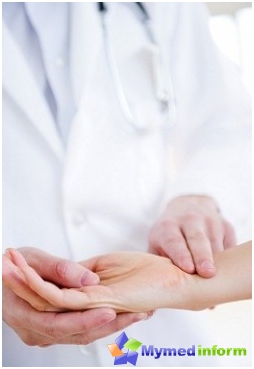
Bradycardia treatment should be carried out only under the supervision of a specialist - Cardiologist. Only such a doctor can correctly diagnose and choose adequate mode and treatment methods. Often the treatment is carried out by one of the most effective methods in severe forms of this disease. This method is the implantation of an electrocardiotimulator, which is set at a heart rate less frequently than 40 shots per minute and when stopped a heart for 2 seconds and more. The treatment of sinus bradycardia in children is carried out in different ways, it depends on the complexity of the disease. If this is a child moderate bradycardia, then the treatment is carried out by antiarrhythmic drugs. With more complex cases, adrenaline is used. Also, at the time of treatment, the physical exertion of the child decrease significantly.
In pregnancy, bradycardia does not worsen the condition of the patients and is not an indication for the interruption of pregnancy. Much worse, if a woman has severe organic heart lesions, which lead to bradycardia. The development of bradycardia in the fetus may appear if the mother takes certain drug drugs. Modern technologies allow you to determine bradycardia in the earliest stages of the appearance, so newborn disease should be seen immediately and treatment must begin immediately to ensure that bradycardia does not exceed the chronic form.
For athletes, the pulse with the number of blows per minute less than 60, but not less than 40, is considered within the normal range. This is due to the fact that the process of adaptation to a sharp or long-term physical tension occurs. Therefore, bradycardia in athletes is quite a normal phenomenon.
Folk remedies
Treatment of sinus bradycardia can be carried out both by medication methods and folk. Bradycardia treatment with folk remedies is carried out using the following recipes:
- use of bee dusting, olive oil, fish oil, seaweed;
- Reception of a mixture of 15 g of yarrow, filled with 200 grams of water and infused 15 minutes. Such infusion you need to drink three times in one tablespoon. The course of treatment lasts before recovery from bradycardia;
- Helps from bradycardia Red boiled wine with dill seeds;
- 10 lemons juice mix with a casket out of 10 garlic heads and a liter of good honey. Insist this mixture for 10 days. Take 4 teaspoons for half an hour before meals 1 time per day. Course treatment - 3 months.
Prevention
Bradycardia prevention should be held constantly. For this, you should be examined at a cardiologist once a year, which will help to detect and cure this disease.
To reduce the risk of bradycardia, it is worth following the following steps:
- refuse smoking;
- normalize arterial pressure;
- control diabetes and maintain the level of sugar, close to normal;
- at high level cholesterol try to reduce it;
- maintain optimally normal weight;
- use useful products for heart;
- maximize the use of alcohol;
- do physical exercise daily;
- try to avoid stress factors.



